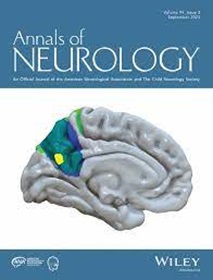Increased White Matter Aerobic Glycolysis in Multiple Sclerosis
Abstract
Objective
Despite treatments which reduce relapses in multiple sclerosis (MS), many patients continue to experience progressive disability accumulation. MS is associated with metabolic disruptions and cerebral metabolic stress predisposes to tissue injury and possibly impaired remyelination. Additionally, myelin homeostasis is metabolically expensive and reliant on glycolysis. We investigated cerebral metabolic changes in MS and when in the disease course they occurred, and assessed their relationship with microstructural changes.
Methods
This study used combined fluorodeoxyglucose (FDG) positron emission tomography (PET) and magnetic resonance imaging (MRI) to measure cerebral metabolic rate of glucose and oxygen, thereby quantifying glycolysis. Twelve healthy controls, 20 patients with relapsing MS, and 13 patients with non-relapsing MS were studied. Relapsing patients with MS were treatment naïve and scanned pre- and post-initiation of high efficacy disease modifying therapy.
Results
In normal appearing white matter, we observed increased glucose utilization and reduced oxygen utilization in newly diagnosed MS, consistent with increased glycolysis. Increased glycolysis was greater in patients with a longer disease duration course and higher disability. Among newly diagnosed patients, different treatments had differential impacts on glucose utilization. Last, whereas hypermetabolism within lesions was clearly associated with inflammation, no such relationship was found within normal appearing white matter.
Interpretation
Increased white matter glycolysis is a prominent feature of cerebral metabolism in MS. It begins early in the disease course, increases with disease duration and is independent of microstructural evidence of inflammation in normal appearing white matter. Optimization of the metabolic environment may be an important component of therapies designed to reduce progressive disability. ANN NEUROL 2025;97:766–778

 求助内容:
求助内容: 应助结果提醒方式:
应助结果提醒方式:


